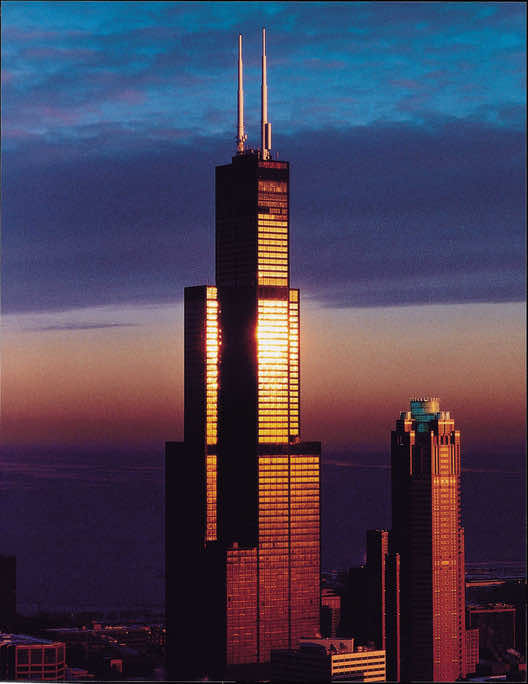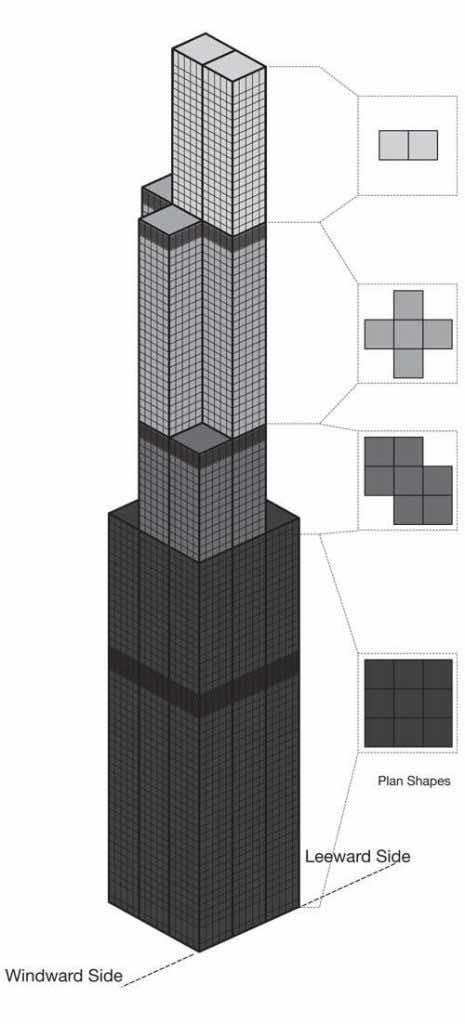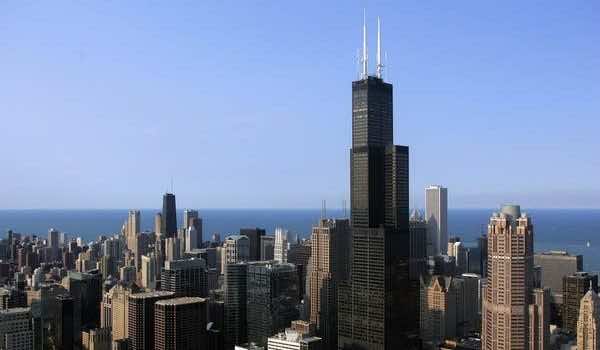Willis tower is today the most iconic presence in Chicago’s famous skyline. Known as the Sears Tower for most of its existence, it held the record for the world’s tallest building from 1974 to 1998, almost 25 years, and held the record for the tallest building in the western hemisphere for about 41 years. Beyond these records, the tower is also notable for its tube frame structural design which has revolutionized skyscraper design and made possible the structures we see today.
Sears, Roebuck, & Company commissioned the architecture firm Skidmore, Owings, & Merrill to design an office building that would house their headquarters and the many offices they had scattered around Chicago in one building. Architect Bruce Graham led the team alongside structural engineer Fazlur Rehman Khan. The design also had to incorporate extra office space for the anticipated future growth of the company. The building is 108 stories tall, rising 1,450 feet above the city. The height of the building is due to spacial needs. The company analyzed their current spacial needs, as well as the space needed for growth up to the year 2003 being as meticulous as determining the number of desks for personnel.

SOM proposed a superstructure of nine interlocking tubes of varying heights, divided in 75′ x 75′ squares that are separate buildings joined together as one. The different heights allow for the building to step back, meeting setback regulations and creating the iconic staggering effect that the building is known for. The “bundled-tube” configuration was innovated by engineer Fazlur R. Khan from SOM, and these nine tubes formed the skyscraper’s basic structure. This innovation made Fazlur Khan one of the most influential structural engineers of the 20th century, and it continues to this day. This system allowed for large open office spaces on the lower levels (where the Sears offices would be located) and smaller floors as the building soared in height with unobstructed views of the city.
It is clad in black anodized aluminum panels and bronze-tinted glass, a façade that has become emblematic of American architecture in general and Chicago’s skyline in particular. Its observation deck is host to over a million tourists each year and is another reason why the Sears/Willis Tower holds such a place in the Chicago cultural zeitgeist.



